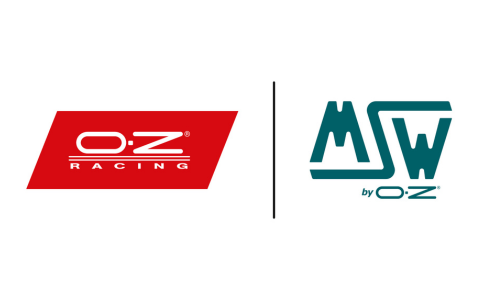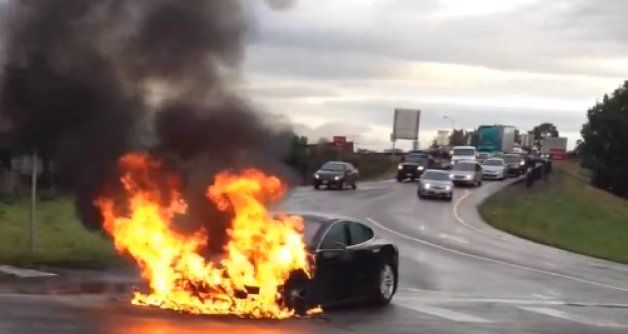Alcuni giorni fa, in America, un possessore di Tesla Model S stava viaggiando con la propria amata elettrica quando ad un certo punto la macchina ha urtato, ad alta velocità, un pezzo di metallo di dimensioni consistenti (probabilmente caduto in strada da un camion).
L’impatto ha causato gravi danni alla Model S, tanto da danneggiare il modulo anteriore delle batterie (la Model S ne ha sedici), causandone l’incendio. Fortunatamente l’incidente non ha causato danni a persone ed il fuoco è stato circoscritto al primo modulo, grazie al materiale ignifugo che separa un modulo dall’altro. Inoltre, le predisposte prese d’aria sono state in grado di quantomeno direzionare le fiamme lontane dal resto della macchina. L’abitacolo, infatti, non ha preso fuoco.
Ecco il video:
Elon Musk, nella sua lettera, dice che se lo stesso oggetto fosse stato colpito da un’auto a benzina, il risultato sarebbe potuto essere ben peggiore, visto la scarsa protezione dei condotti per il carburante che una classica auto a benzina ha. Elon mette anche a paragone un po’ di dati statistici, spiegando che ogni anno in America ci sono 150.000 incendi automobilistici (dati della National Fire Protection Association). Questa informazione, rapportata ai 3000 miliardi di miglia che gli americani percorrono ogni anno, produce 1 incendio ogni 20 milioni di miglia percorsi. Nel caso delle auto Tesla, invece, (sebbene i dati a disposizione siano molti meno), si ha 1 incendio ogni 100 milioni di miglia. In sostanza, dice il Chairman Tesla, è molto più rischioso viaggiare con auto contenente liquidi altamente infiammabili che con una macchina a batteria.
Ovviamente un fatto come questo creerà panico, clamore e frasi scontato del tipo “Le auto elettriche sono pericolose”. Non dimentichiamoci però che proprio la Model S ha ricevuto un’altissimo punteggio sulla sicurezza dalla National Highway Traffic Safety Administration (NHTSA): ben 5.4 su una scala massima di 5. Un record a tutti gli effetti, quindi.
Questa è la lettera che Elon ha scritto riguardo l’incidente:
[fusion_builder_container hundred_percent=”yes” overflow=”visible”][fusion_builder_row][fusion_builder_column type=”1_1″ background_position=”left top” background_color=”” border_size=”” border_color=”” border_style=”solid” spacing=”yes” background_image=”” background_repeat=”no-repeat” padding=”” margin_top=”0px” margin_bottom=”0px” class=”” id=”” animation_type=”” animation_speed=”0.3″ animation_direction=”left” hide_on_mobile=”no” center_content=”no” min_height=”none”][fusion_testimonial name=”Elon Musk, Chairman, Product Architect & CEO” gender=”male” company=”Tesla Motors”]
Earlier this week, a Model S traveling at highway speed struck a large metal object, causing significant damage to the vehicle. A curved section that fell off a semi-trailer was recovered from the roadway near where the accident occurred and, according to the road crew that was on the scene, appears to be the culprit. The geometry of the object caused a powerful lever action as it went under the car, punching upward and impaling the Model S with a peak force on the order of 25 tons. Only a force of this magnitude would be strong enough to punch a 3 inch diameter hole through the quarter inch armor plate protecting the base of the vehicle.
The Model S owner was nonetheless able to exit the highway as instructed by the onboard alert system, bring the car to a stop and depart the vehicle without injury. A fire caused by the impact began in the front battery module – the battery pack has a total of 16 modules – but was contained to the front section of the car by internal firewalls within the pack. Vents built into the battery pack directed the flames down towards the road and away from the vehicle.
When the fire department arrived, they observed standard procedure, which was to gain access to the source of the fire by puncturing holes in the top of the battery’s protective metal plate and applying water. For the Model S lithium-ion battery, it was correct to apply water (vs. dry chemical extinguisher), but not to puncture the metal firewall, as the newly created holes allowed the flames to then vent upwards into the front trunk section of the Model S. Nonetheless, a combination of water followed by dry chemical extinguisher quickly brought the fire to an end.
It is important to note that the fire in the battery was contained to a small section near the front by the internal firewalls built into the pack structure. At no point did fire enter the passenger compartment.
Had a conventional gasoline car encountered the same object on the highway, the result could have been far worse. A typical gasoline car only has a thin metal sheet protecting the underbody, leaving it vulnerable to destruction of the fuel supply lines or fuel tank, which causes a pool of gasoline to form and often burn the entire car to the ground. In contrast, the combustion energy of our battery pack is only about 10% of the energy contained in a gasoline tank and is divided into 16 modules with firewalls in between. As a consequence, the effective combustion potential is only about 1% that of the fuel in a comparable gasoline sedan.
The nationwide driving statistics make this very clear: there are 150,000 car fires per year according to the National Fire Protection Association, and Americans drive about 3 trillion miles per year according to the Department of Transportation. That equates to 1 vehicle fire for every 20 million miles driven, compared to 1 fire in over 100 million miles for Tesla. This means you are 5 times more likely to experience a fire in a conventional gasoline car than a Tesla!
For consumers concerned about fire risk, there should be absolutely zero doubt that it is safer to power a car with a battery than a large tank of highly flammable liquid.
[/fusion_testimonial]
Inoltre Tesla ha anche pubblicato la corrispondenza con il cliente sfortunato che, nonostante tutto, è felice del supporto di Tesla e in completo accordo con l’analisi fatta.
Insomma, come sempre fa più rumore un albero che casca rispetto a una foresta che cresce. Nel caso di Tesla, la foresta è foltissima, fatta di alberi maestosi e forti. E voi come la pensate? Commentate sotto all’articolo.
[/fusion_builder_column][fusion_builder_column type=”1_1″ background_position=”left top” background_color=”” border_size=”” border_color=”” border_style=”solid” spacing=”yes” background_image=”” background_repeat=”no-repeat” padding=”” margin_top=”0px” margin_bottom=”0px” class=”” id=”” animation_type=”” animation_speed=”0.3″ animation_direction=”left” hide_on_mobile=”no” center_content=”no” min_height=”none”][fusion_testimonial]
From: robert Carlson
Sent: Thursday, October 03, 2013 12:53 PM
To: Jerome Guillen
Subject: carlson 0389
Mr. Guillen,
Thanks for the support. I completely agree with the assessment to date. I guess you can test for everything, but some other celestial bullet comes along and challenges your design. I agree that the car performed very well under such an extreme test. The batteries went through a controlled burn which the internet images really exaggerates. Anyway, I am still a big fan of your car and look forward to getting back into one. Justin offered a white loaner–thanks. I am also an investor and have to say that the response I am observing is really supportive of the future for electric vehicles. I was thinking this was bound to happen, just not to me. But now it is out there and probably gets a sigh of relief as a test and risk issue-this “doomsday” event has now been tested, and the design and engineering works.
rob carlson
On Oct 3, 2013, at 12:29 PM, Jerome Guillen wrote:
Dear Mr. Carlson:
I am the VP of sales and service for Tesla, reporting directly to Elon Musk, Tesla’s CEO.
I am sorry to hear that you experienced a collision in your Model S 2 days ago. We are happy that the Model S performed in such a way that you were not injured in the accident and that nobody else was hurt.
I believe you have been in contact with Justin Samson, our service manager, since the accident. We are following this case extremely closely and we have sent a team of experts to review your vehicle. All indications are that your Model S drove over large, oddly-shaped metal object which impacted the leading edge of the vehicle’s undercarriage and rotated into the underside of the vehicle (“pole vault” effect). This is a highly uncommon occurrence.
Based on our review thus far, we believe that the Model S performed as designed by limiting the resulting fire to the affected zones only. Given the significant intensity of the impact, which managed to pierce the 1/4 inch bottom plate (something that is extremely hard to do), the Model S energy containment functions operated correctly. In particular, the top cover of the battery provided a strong barrier and there was no apparent propagation of the fire into the cabin. This ensured cabin integrity and occupant safety, which remains our most important goal.
We very much appreciate your support, patience and understanding while we proceed with the investigation. Justin keeps me closely informed. Please feel free to contact me directly, if you have any question or concern.
Best regards,
Jerome Guillen I VP, WW sales and service
[/fusion_testimonial][/fusion_builder_column][/fusion_builder_row][/fusion_builder_container]

